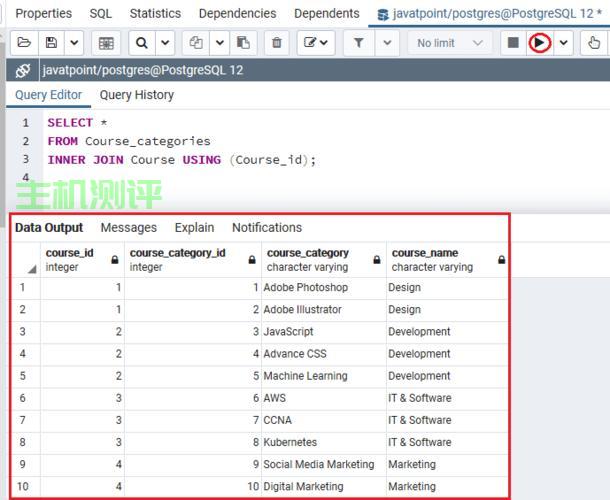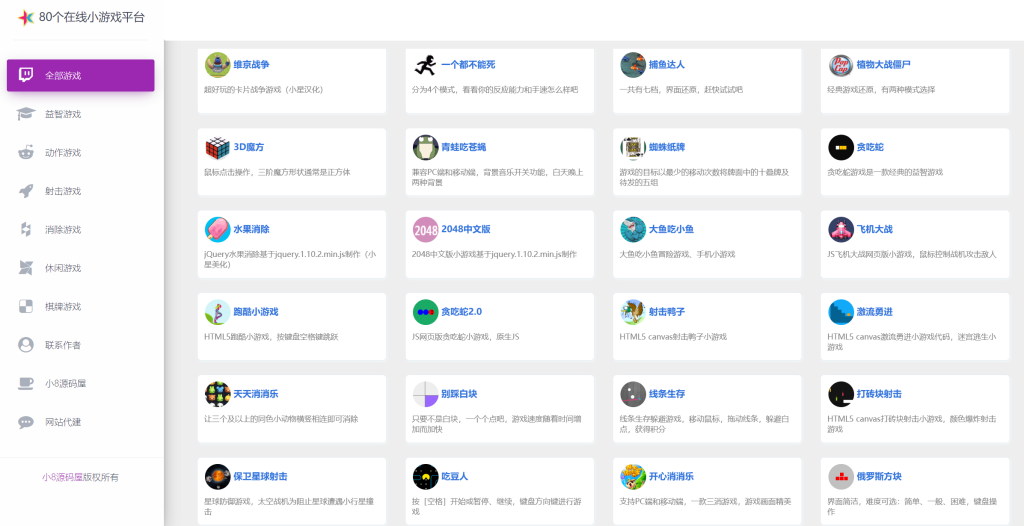【postgresql 基础入门】自然连接(natural join)与交叉连接(cross join),等价SQL变换形式,以及它们独到的应用场景
自然连接与交叉连接
专栏内容:
- postgresql内核源码分析
- 手写数据库toadb
- 并发编程
个人主页:我的主页
管理社区:开源数据库
座右铭:天行健,君子以自强不息;地势坤,君子以厚德载物.
文章目录
- 自然连接与交叉连接
- 一、前言
- 二、概述
- 三、自然连接
- 自然连接的语法
- 案例演示
- 注意事项
- 四、交叉连接
- cross join语法
- 案例演示
- 应用场景
- 五、总结
- 六、结尾
一、前言
本文重点介绍natural join与cross join的用法,以及它们的应用场景。
二、概述
与前面介绍的left join, right join, inner join不同,本文介绍两种新的join方式,它们不需指定连接的列。
(图片来源网络,侵删)- 自然连接natural join,在两个表上的名称相同的列上进行连接;
- 交叉连接cross join,在两个表上的所有列进行连接,即表1的所有行与表2的所有行进行一次连接;
下面一起来看看它们的用法,以及分别用于那些场景中。
三、自然连接
自然连接的语法
自然连接natural join的基本语法结构如下:
SELECT select_target_list FROM tablename1 NATURAL [INNER, LEFT, RIGHT] JOIN tablename2;
在natural join时,还可以指定连接的方式inner, left, right,如果不指定时,默认为inner方式。
等价的join写法,类似于以下语法格式:
SELECT select_target_list FROM tablename1 [INNER, LEFT, RIGHT] JOIN tablename2 ON tablename1.column_name1 = tablename2.column_name2;
下面通过案例演示来体会。
案例演示
作为演示的准备,首先创建两张表,并插入数据。
CREATE TABLE customers ( customer_id INT PRIMARY KEY, name VARCHAR(50), email VARCHAR(50) ); CREATE TABLE orders ( order_id INT PRIMARY KEY, customer_id INT, order_date DATE, total_amount DECIMAL(10,2) ); INSERT INTO customers (customer_id, name, email) VALUES (1, 'John Doe', 'john@example.com'), (2, 'Jane Smith', 'jane@example.com'), (3, 'Bob Johnson', 'bob@example.com'), (4, 'Steven John', 'steven@example.com'), (5, 'Kenidy', 'Kenidy@example.com'); INSERT INTO orders (order_id, customer_id, order_date, total_amount) VALUES (1, 1, '2023-01-01', 100.00), (2, 1, '2023-02-01', 200.00), (3, 2, '2023-02-15', 150.00), (4, 3, '2023-03-01', 75.00);- natural inner join
自然连接的inner查询,两表中都有列名customer_id,它作为关联列。
postgres=# select * from customers natural inner join orders; customer_id | name | email | order_id | order_date | total_amount -------------+-------------+------------------+----------+------------+-------------- 1 | John Doe | john@example.com | 1 | 2023-01-01 | 100.00 1 | John Doe | john@example.com | 2 | 2023-02-01 | 200.00 2 | Jane Smith | jane@example.com | 3 | 2023-02-15 | 150.00 3 | Bob Johnson | bob@example.com | 4 | 2023-03-01 | 75.00 (4 rows)可以看到结果是两表的内联接。
当然查询SQL可以写作以下形式,结果也是相同的。
postgres=# select * from customers inner join orders using(customer_id); customer_id | name | email | order_id | order_date | total_amount -------------+-------------+------------------+----------+------------+-------------- 1 | John Doe | john@example.com | 1 | 2023-01-01 | 100.00 1 | John Doe | john@example.com | 2 | 2023-02-01 | 200.00 2 | Jane Smith | jane@example.com | 3 | 2023-02-15 | 150.00 3 | Bob Johnson | bob@example.com | 4 | 2023-03-01 | 75.00 (4 rows)还有它的等价形式,如下:
postgres=# select * from customers inner join orders on customers.customer_id = orders.customer_id; customer_id | name | email | order_id | customer_id | order_date | total_amount -------------+-------------+------------------+----------+-------------+------------+-------------- 1 | John Doe | john@example.com | 1 | 1 | 2023-01-01 | 100.00 1 | John Doe | john@example.com | 2 | 1 | 2023-02-01 | 200.00 2 | Jane Smith | jane@example.com | 3 | 2 | 2023-02-15 | 150.00 3 | Bob Johnson | bob@example.com | 4 | 3 | 2023-03-01 | 75.00 (4 rows)以上几种SQL写法查出来的结果都是一样的,它都是以内联的方式来得到结果。
- natural left/right join
其它的left,right连接也是类似的,与对应的left,right join有相同的效果。
postgres=# select * from customers natural left join orders; customer_id | name | email | order_id | order_date | total_amount -------------+-------------+--------------------+----------+------------+-------------- 1 | John Doe | john@example.com | 1 | 2023-01-01 | 100.00 1 | John Doe | john@example.com | 2 | 2023-02-01 | 200.00 2 | Jane Smith | jane@example.com | 3 | 2023-02-15 | 150.00 3 | Bob Johnson | bob@example.com | 4 | 2023-03-01 | 75.00 5 | Kenidy | Kenidy@example.com | | | 4 | Steven John | steven@example.com | | | (6 rows) postgres=# select * from customers natural right join orders; customer_id | name | email | order_id | order_date | total_amount -------------+-------------+------------------+----------+------------+-------------- 1 | John Doe | john@example.com | 1 | 2023-01-01 | 100.00 1 | John Doe | john@example.com | 2 | 2023-02-01 | 200.00 2 | Jane Smith | jane@example.com | 3 | 2023-02-15 | 150.00 3 | Bob Johnson | bob@example.com | 4 | 2023-03-01 | 75.00 (4 rows)当然也可以转换为对应的指定联接列的 join语句,这里不再赘述。
注意事项
在使用自然连接时,需要特别注意,因为它没有指定关联的列,SQL写法更加简洁,但是这也埋下了一个大坑,来看下面的两张表。
CREATE TABLE customers1 ( customer_id INT PRIMARY KEY, name VARCHAR(50), email VARCHAR(50), ctime timestamp default now() ); CREATE TABLE orders1 ( order_id INT PRIMARY KEY, customer_id INT, order_date DATE, total_amount DECIMAL(10,2), ctime timestamp default now() );
在customers1与orders1表中,分别增加了一列ctime来记录创建的时间,两列的名称一样,此时两张表中有两列的名称相同。
然后上面的数据更换表名后插入,再次执行自然连接。
postgres=# select * from customers1 ; customer_id | name | email | ctime -------------+-------------+--------------------+---------------------------- 1 | John Doe | john@example.com | 2024-03-26 08:13:37.416833 2 | Jane Smith | jane@example.com | 2024-03-26 08:13:37.416833 3 | Bob Johnson | bob@example.com | 2024-03-26 08:13:37.416833 4 | Steven John | steven@example.com | 2024-03-26 08:13:37.416833 5 | Kenidy | Kenidy@example.com | 2024-03-26 08:13:37.416833 (5 rows) postgres=# select * from orders1; order_id | customer_id | order_date | total_amount | ctime ----------+-------------+------------+--------------+---------------------------- 1 | 1 | 2023-01-01 | 100.00 | 2024-03-26 08:13:54.054266 2 | 1 | 2023-02-01 | 200.00 | 2024-03-26 08:13:54.054266 3 | 2 | 2023-02-15 | 150.00 | 2024-03-26 08:13:54.054266 4 | 3 | 2023-03-01 | 75.00 | 2024-03-26 08:13:54.054266 (4 rows)数据与上例一致,只是多了创建本条数据的时间。
postgres=# select * from customers1 natural inner join orders1; customer_id | ctime | name | email | order_id | order_date | total_amount -------------+-------+------+-------+----------+------------+-------------- (0 rows)
居然没有查到数据,这是因为连接时使用了ctime作为联接列导致,所以大家在使用时一定要注意,表中是否有多余的相同名称和类型的列存在。
四、交叉连接
交叉连接,也就是我们常说的笛卡尔积,表1的所有行与表2的每一行行进行联接,结果数据行数为两表行数的积。
下面我们通过语法格式,案例演示,应用场景三个部分来详细介绍交叉连接。
cross join语法
SELECT select_target_list FROM tablename1 CROSS JOIN tablename2;
在交叉连接中,不用指定inner,left,right,其实它不需要有联接列,而是将两表的两行数据直接拼接起来组成结果集中的新行。
等价的SQL写法如下:
SELECT select_target_list FROM tablename1, tablename2;
案例演示
演示的表和数据仍然使用上例中的customers与orders表。
cross join的写法的SQL执行结果如下:
postgres=# select * from customers cross join orders ; customer_id | name | email | order_id | customer_id | order_date | total_amount -------------+-------------+--------------------+----------+-------------+------------+-------------- 1 | John Doe | john@example.com | 1 | 1 | 2023-01-01 | 100.00 2 | Jane Smith | jane@example.com | 1 | 1 | 2023-01-01 | 100.00 3 | Bob Johnson | bob@example.com | 1 | 1 | 2023-01-01 | 100.00 4 | Steven John | steven@example.com | 1 | 1 | 2023-01-01 | 100.00 5 | Kenidy | Kenidy@example.com | 1 | 1 | 2023-01-01 | 100.00 1 | John Doe | john@example.com | 2 | 1 | 2023-02-01 | 200.00 2 | Jane Smith | jane@example.com | 2 | 1 | 2023-02-01 | 200.00 3 | Bob Johnson | bob@example.com | 2 | 1 | 2023-02-01 | 200.00 4 | Steven John | steven@example.com | 2 | 1 | 2023-02-01 | 200.00 5 | Kenidy | Kenidy@example.com | 2 | 1 | 2023-02-01 | 200.00 1 | John Doe | john@example.com | 3 | 2 | 2023-02-15 | 150.00 2 | Jane Smith | jane@example.com | 3 | 2 | 2023-02-15 | 150.00 3 | Bob Johnson | bob@example.com | 3 | 2 | 2023-02-15 | 150.00 4 | Steven John | steven@example.com | 3 | 2 | 2023-02-15 | 150.00 5 | Kenidy | Kenidy@example.com | 3 | 2 | 2023-02-15 | 150.00 1 | John Doe | john@example.com | 4 | 3 | 2023-03-01 | 75.00 2 | Jane Smith | jane@example.com | 4 | 3 | 2023-03-01 | 75.00 3 | Bob Johnson | bob@example.com | 4 | 3 | 2023-03-01 | 75.00 4 | Steven John | steven@example.com | 4 | 3 | 2023-03-01 | 75.00 5 | Kenidy | Kenidy@example.com | 4 | 3 | 2023-03-01 | 75.00 (20 rows)可以看到结果集总共有20行数据,是两表的行数积,同时结果集中的列是两表所有列的拼接。
它的等价写法SQL的执行结果如下:
postgres=# select * from customers , orders ; customer_id | name | email | order_id | customer_id | order_date | total_amount -------------+-------------+--------------------+----------+-------------+------------+-------------- 1 | John Doe | john@example.com | 1 | 1 | 2023-01-01 | 100.00 2 | Jane Smith | jane@example.com | 1 | 1 | 2023-01-01 | 100.00 3 | Bob Johnson | bob@example.com | 1 | 1 | 2023-01-01 | 100.00 4 | Steven John | steven@example.com | 1 | 1 | 2023-01-01 | 100.00 5 | Kenidy | Kenidy@example.com | 1 | 1 | 2023-01-01 | 100.00 1 | John Doe | john@example.com | 2 | 1 | 2023-02-01 | 200.00 2 | Jane Smith | jane@example.com | 2 | 1 | 2023-02-01 | 200.00 3 | Bob Johnson | bob@example.com | 2 | 1 | 2023-02-01 | 200.00 4 | Steven John | steven@example.com | 2 | 1 | 2023-02-01 | 200.00 5 | Kenidy | Kenidy@example.com | 2 | 1 | 2023-02-01 | 200.00 1 | John Doe | john@example.com | 3 | 2 | 2023-02-15 | 150.00 2 | Jane Smith | jane@example.com | 3 | 2 | 2023-02-15 | 150.00 3 | Bob Johnson | bob@example.com | 3 | 2 | 2023-02-15 | 150.00 4 | Steven John | steven@example.com | 3 | 2 | 2023-02-15 | 150.00 5 | Kenidy | Kenidy@example.com | 3 | 2 | 2023-02-15 | 150.00 1 | John Doe | john@example.com | 4 | 3 | 2023-03-01 | 75.00 2 | Jane Smith | jane@example.com | 4 | 3 | 2023-03-01 | 75.00 3 | Bob Johnson | bob@example.com | 4 | 3 | 2023-03-01 | 75.00 4 | Steven John | steven@example.com | 4 | 3 | 2023-03-01 | 75.00 5 | Kenidy | Kenidy@example.com | 4 | 3 | 2023-03-01 | 75.00 (20 rows)结果是相同的。
当然还有一种等价用法,利用inner join的条件表达式恒为true的方式,也可以达到cross join的效果。
postgres=# select * from customers inner join orders on true; customer_id | name | email | order_id | customer_id | order_date | total_amount -------------+-------------+--------------------+----------+-------------+------------+-------------- 1 | John Doe | john@example.com | 1 | 1 | 2023-01-01 | 100.00 2 | Jane Smith | jane@example.com | 1 | 1 | 2023-01-01 | 100.00 3 | Bob Johnson | bob@example.com | 1 | 1 | 2023-01-01 | 100.00 4 | Steven John | steven@example.com | 1 | 1 | 2023-01-01 | 100.00 5 | Kenidy | Kenidy@example.com | 1 | 1 | 2023-01-01 | 100.00 1 | John Doe | john@example.com | 2 | 1 | 2023-02-01 | 200.00 2 | Jane Smith | jane@example.com | 2 | 1 | 2023-02-01 | 200.00 3 | Bob Johnson | bob@example.com | 2 | 1 | 2023-02-01 | 200.00 4 | Steven John | steven@example.com | 2 | 1 | 2023-02-01 | 200.00 5 | Kenidy | Kenidy@example.com | 2 | 1 | 2023-02-01 | 200.00 1 | John Doe | john@example.com | 3 | 2 | 2023-02-15 | 150.00 2 | Jane Smith | jane@example.com | 3 | 2 | 2023-02-15 | 150.00 3 | Bob Johnson | bob@example.com | 3 | 2 | 2023-02-15 | 150.00 4 | Steven John | steven@example.com | 3 | 2 | 2023-02-15 | 150.00 5 | Kenidy | Kenidy@example.com | 3 | 2 | 2023-02-15 | 150.00 1 | John Doe | john@example.com | 4 | 3 | 2023-03-01 | 75.00 2 | Jane Smith | jane@example.com | 4 | 3 | 2023-03-01 | 75.00 3 | Bob Johnson | bob@example.com | 4 | 3 | 2023-03-01 | 75.00 4 | Steven John | steven@example.com | 4 | 3 | 2023-03-01 | 75.00 5 | Kenidy | Kenidy@example.com | 4 | 3 | 2023-03-01 | 75.00 (20 rows)应用场景
cross join来作两表的笛卡尔积,在一些场景下是非常有帮助的。
- 遍历尝试
比如任务分配,那种任务与人员组合更合适,可能需要一一对应分析一下;还有一些计算推理,用到了枚举的方式,那就对所有可能结果都需要分析;
此时分析任务的输入或者驱动就是cross join的结果集。
- 统计分析
假如要对所有门店与所有商品进行统计分析,看门店销售的情况,那么也需要作一个cross join,即使某个商品在该门店没有销售订单,也要有分析结果。
五、总结
本文分享了natural join和cross join的语法格式,同时它们有几种等价的SQL写法;因为natural join简洁的写法,有时会带来麻烦,在使用前要检查两表中是否有多列会产生join效果。
cross join虽然简单,但是它也有很多应用场景,在统计分析,任务分析等方面经常使用。
六、结尾
非常感谢大家的支持,在浏览的同时别忘了留下您宝贵的评论,如果觉得值得鼓励,请点赞,收藏,我会更加努力!
作者邮箱:study@senllang.onaliyun.com
如有错误或者疏漏欢迎指出,互相学习。
注:未经同意,不得转载!
- 统计分析
- 遍历尝试
- natural left/right join
- natural inner join







还没有评论,来说两句吧...